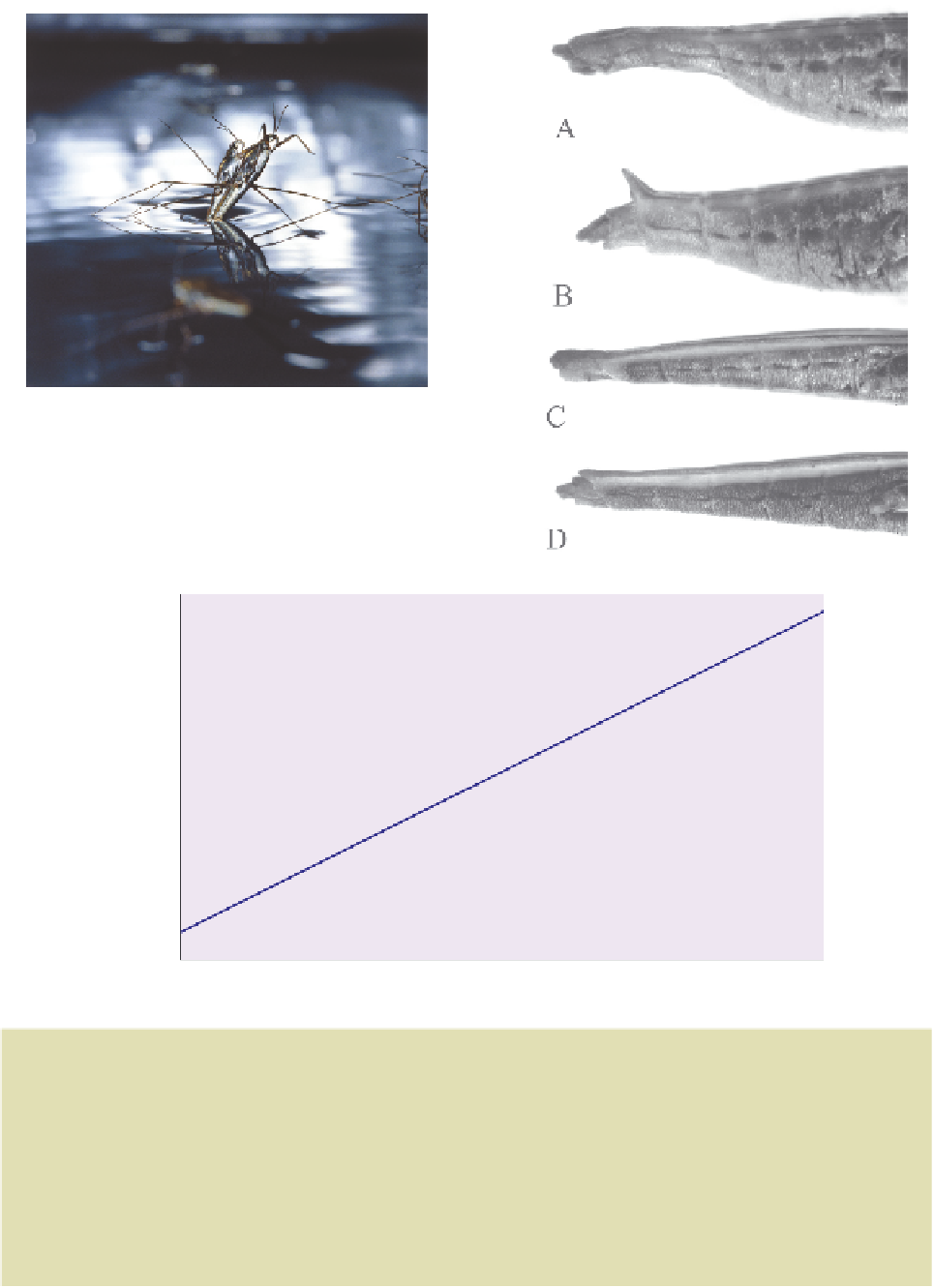Biology Reference
In-Depth Information
(a)
(b)
(c)
0.08
thoracicus
gibbifer
marginatus
0.04
lateralis
incurvatus
brasili
argentatus
comatus
lacustris
0.00
gillettei
sphagnetorum
-0.04
odontogaster
pingrensis
buenoi
-0.08
incognitus
-0.12
-0.12
-0.08
-0.04
0.00
0.04
0.08
Female body shape
Fig. 7.18
(a) A pair of water striders
Gerris lacustris
engaged in a pre-mating struggle. The female (below) raises up
to push the tips of the pair's abdomens onto the water's surface tension, which often causes the male to lose his
grip. Photo © Ingela Danielsson and Jens Rydell. (b) In some species, like
Gerris incognitus
, males have evolved
grasping genital segments (A) and females have evolved abdominal spines (B), which help the female resist the
male's grip. Other species, like
Gerris thoracicus
, are less armed and less dimorphic (C male; D female). (c) When
indices of armament levels of male and female across different species of
Gerris
are plotted together, the species
tend to fall along a line suggesting sexually antagonistic coevolution, in which increased male armament for grasping
is matched by increased anti-grasping defences in females. The most armed species are bottom left (e.g.
incognitus
)
and the least armed are top right (e.g.
thoracicus
). From Arnqvist and Rowe (2002b). Reprinted with permission from
the Nature Publishing Group.






































